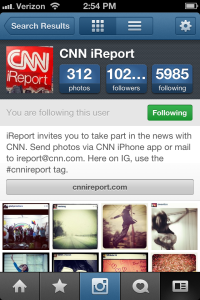This blog was created as an assignment for my social media class at New York University. Creating my first blog has been quite an interesting experience. Over the past few months I have worked to combine my passion for public relations with current events and social media tools to try and create an interesting blog. I’ve learned a lot along the way, as well as gotten over a few worries.
In the beginning the thought of publishing my writing to the Internet for anyone to see was a bit intimidating. I was baffled by this new concern because I’ve never really had any qualms about others reading my work. After a while I realized my new feeling of unease was because all of the work I had put out in the past was scholarly-based, and blog writing can be a bit more personal and opinionated at times. After a few posts I quickly overcame this fear.
Another difficulty I faced was choosing what topics to write about. I often felt overwhelmed with all of the possibilities and social media subjects available. I became better at choosing subjects after a few weeks, but I preferred the times when my professor would assign a blog topic.

Photo from futureshape on flickr
Blogging has brought some surprises as well. After publishing my first post I was shocked to see that someone I didn’t know had liked it. I knew my work had been put out into the World Wide Web, but I guess I couldn’t believe someone had actually found it amongst the wealth of blogs and information out there. Interactions with other bloggers have continued to surprise me over the past few months. I believe I’m finally beginning to wrap my head around the potential reach a blog can have, and it’s truly amazing.
I’ve particularly enjoyed all of the interaction and knowledge blogging has brought me. I’ve discovered some new blogs I love to read and gotten some great insight on my posts from my peers. I’m still unsure as to whether I will continue blogging, but I am definitely thankful for this experience.







